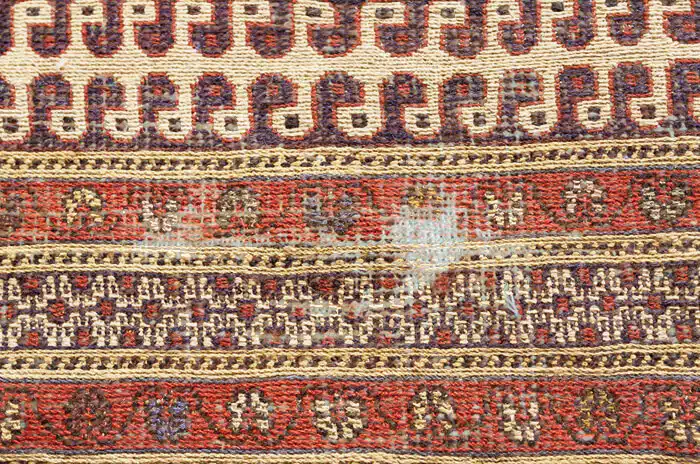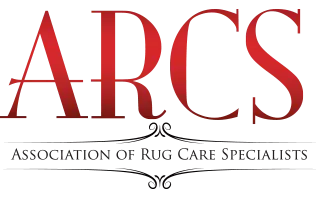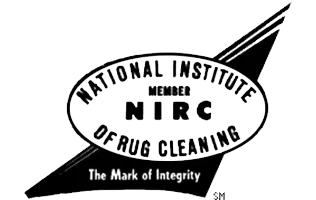Over the past decade especially, wool moth infestation has been an increasing problem across the Southeastern United States. Wool/clothes eating moths can be detrimental to a home. Infestation is not pleasant to handle, and it can be a challenge to discover the best way to remove wool moths and prevent damage. Thankfully, there is hope in fixing a current wool moth infestation and preventing one in the future.
About Wool Moths
Adult wool moths are relatively harmless; however; the larvae cause damage by eating wool and other natural fibers. They mainly live in dark, less-disturbed areas of a house, such as behind or underneath furniture, along skirting boards, and in closets.
Wool moths can remain quite comfortable in a temperature-regulated home, and therefore are persistent household pests year-round, however spring, summer and fall are the worst seasons for wool moths, especially if there is consistent rain. A continual prevention routine will get rid of wool moths, as well as prevent future infestation.
What They Look Like
There are many species of wool moths, ranging between white and dark brown colors. Once suspecting wool moths in a home, thorough research should be done in order to correctly identify them. Besides looking out for the adult winged moths, search the home for the larvae, which are ¼ to ½ inch long with a cream body and darker head. The eggs can be found upon close inspection; they are usually found hidden among the carpet weaves.
Wool Moths vs. Pantry Moths
It is also possible to find pantry moths in a home. It’s important to research and distinguish between wool moths and pantry moths to ensure that the proper moth traps are used. A wool moth and pantry moth will be attracted to different pheromones. Pantry moths will usually invade kitchen areas or wherever food is stored.
How To Remove Wool Moths & Prevent Wool Moth Damage
A few proven methods to remove wool moths and prevent wool moth damage include setting traps, locating infested areas, reducing population growth by eliminating eggs and larvae, the application of wool moth treatment, and routine deep cleaning of the home.
Wool Moth Traps
Setting wool moth traps will help with assessing the severity of an infestation. Set the traps in dark, undisturbed places such as underneath furniture, along baseboards, behind floor-length curtains, and in the corners of a room. Look out for irregular holes or reduced pile on carpets. In some cases, the carpet could be dwindled down to just threads. Wool moths also eat the natural material of your furniture.
The traps will catch adult males since the trap uses female pheromones to attract them. This will help decrease the reproducing moths. Females lay their eggs in dusty, hidden areas to provide the larvae with a food supply.
Locate Infested Areas
Discourage the continued infestation of wool moths by making their homes uninhabitable. Perform a thorough household clean, focusing on all the dark, dusty, undisturbed areas. Pay extra attention to where wool moth damage has been found. Moths favor dusty areas since they contain hair and skin cells, both of which are food to wool moths.
A powerful vacuum cleaner is an effective way to get rid of wool moths. Vacuum under and around furniture, as well as the furniture itself. Shake out rugs and pillows before airing them out in the sun. A regular and thorough cleaning routine of commonly missed areas will help control the reproduction of moths.
Reduce Population Growth
Keep wool moth traps in the home year-round. This will play a huge role in decreasing the breeding of wool moths. While moth traps may not completely diminish the wool moth population, they will reduce the amount of damage to carpets, clothes, and other home textiles.
The worst thing that adult moths do is reproduce; the larvae are what cause the damage. They can survive in a home for up to three years. Where food is plentiful, wool moths will grow from egg to adult in a little over a month. Your home will be prone to damage as long as wool moth larvae are present.
Remove Wool Moth Eggs & Larvae
Wool moth larvae feast on keratin, which is found in natural animal- and human-based fibers (hair and skin cells). They do not eat cotton or synthetic fabrics. Investigate any natural fibers in the home for damage, including woolens, silk, feather, fur, or soft leather. Larvae tend to target softer materials, such as wool carpets or clothes, fur throws or rugs, wool or cashmere blankets, silk curtains, or leather sofas. These items are unfortunately expensive.
Spotting the tiny wool moth eggs is more difficult than finding larvae hotspots. Fine, sticky webbing in carpets is a sure sign that eggs and larvae are nearby. Utilize online wool moth identification guides to help with searching for wool moth eggs and larvae.
Wool Moth Treatment on Rugs
After an effective deep cleaning of the rug, consider investing in a quality wool moth treatment. This will be one of the best ways to ensure that a wool moth infestation is gone. S&S Rug Cleaners uses a specialized freezer containment system to organically remove wool moths and their larvae. Once your rug has been kept at the precise temperature long enough, we remove it and begin a cleaning process to remove any debris left behind.
Continuing Care
Keeping a regular routine of cleaning the house and focusing on dark, undisturbed areas is the most successful method that will prevent wool moth damage. Human and pet hair, dust, sweat, food stains, and skin cells will continually build up in the home and attract wool moths.
Deep cleaning should include vacuuming on and around furniture – do not forget to remove couch cushions. Removable pillowcases, curtains, and rugs should be shaken out and washed periodically.
While cleaning, set wool moth traps and apply wool moth treatment to high-risk areas. Keep an eye out for new areas that wool moths may have inhabited.
Hand-washing is crucial after using wool moth treatments. For extra protection, the use of gloves and a face mask is recommended when applying treatments.
Finding wool moths in the home is not a hopeless situation. By finding where they are and following a routine cleaning regime, anyone can remove wool moths and prevent wool moth damage.
If you’ve had rugs damaged by wool moths, then it’s time to call S&S Rug Cleaners. We have the equipment needed to remove any remaining wool moth larvae without causing further damage to your valuable rugs. Depending on the damage done, we may even be able to repair your rug. To learn more, give us a call today at 404-355-2126.





